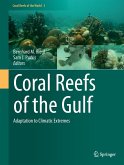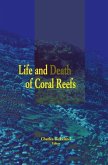Deep-water coral reefs are found along large sections of the outer continental shelves and slopes of Europe, from North Cape to the Gulf of Cadiz, and because they also occur along the Atlantic seaboard of USA, the Gulf of Mexico, off Brazil, in the Mediterranean, and off New Zealand, they are currently being targeted by international groups of marine scientists. They have become popular and opportune deep-water research targets because they offer exciting frontier exploration, combined with a whole plethora of modern scientific methods, such as deep-sea drilling, sampling, remote control surveying and documentation. Furthermore they represent timely opportunities for further developments within the application of geochemistry, stable isotope research, bacterial sciences, including DNA-sequestering, and medical research (search for bioactive compounds).
The Integrated Ocean Drilling Program (IODP) has arranged a deep-sea scientific drilling campaign on giant carbonate banks off Ireland. Because the reefs currently defy traditional marine-ecological theories, they represent future research opportunities and will enjoy scientific scrutiny for many years to come.
The Integrated Ocean Drilling Program (IODP) has arranged a deep-sea scientific drilling campaign on giant carbonate banks off Ireland. Because the reefs currently defy traditional marine-ecological theories, they represent future research opportunities and will enjoy scientific scrutiny for many years to come.
"This book, written by Hovland (Statoil, Norway), a marine geology expert, is of considerable interest due to its many colored photographs and drawings that illustrate the locations and organic diversity of the reefs and mounds. Even though most of the work is devoted to the Scandinavian reefs, those in the other oceans appear to be similar. The text is well written and the author draws attention to the need for conservation, primarily to protect the reefs from damage by deep-water trawling.
Summing Up: Highly recommended. Academic collections, upper-level undergraduates, graduate students, researchers, and faculty." (J. C.Briggs,CHOICE, dec 2008)
Summing Up: Highly recommended. Academic collections, upper-level undergraduates, graduate students, researchers, and faculty." (J. C.Briggs,CHOICE, dec 2008)








